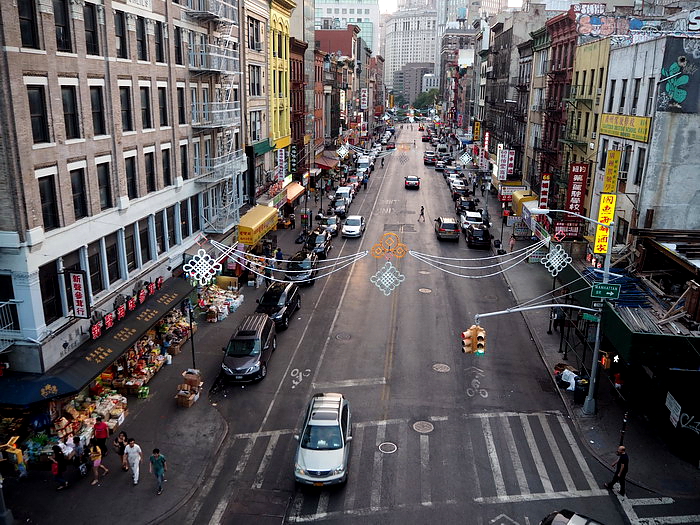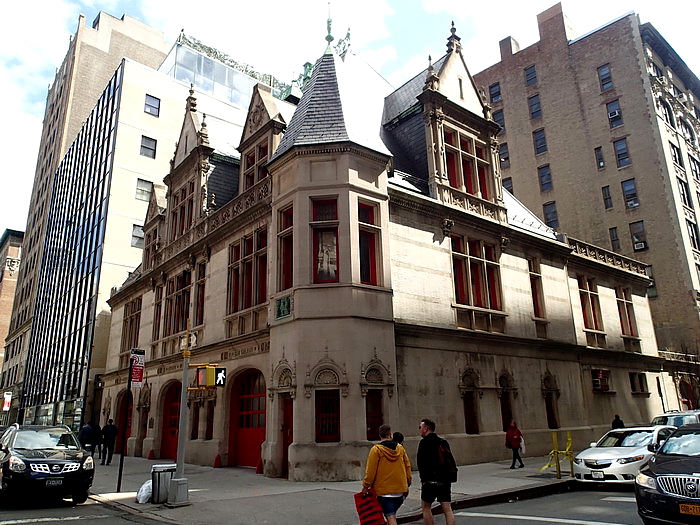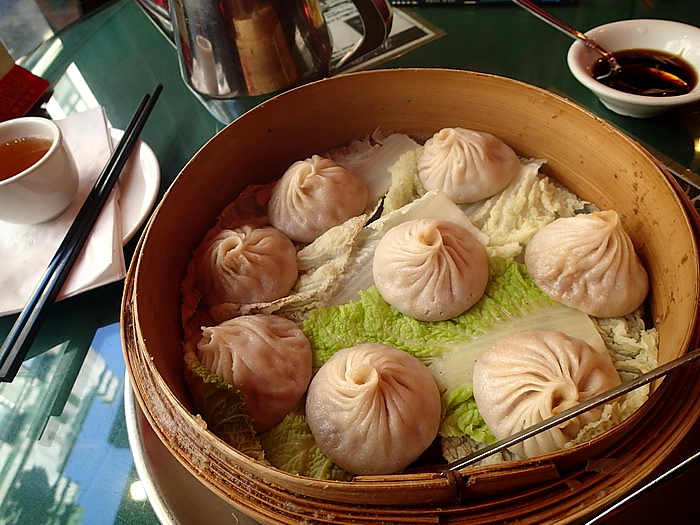Tribeca – Triangle Below Canal Street
Those artsy types who couldn’t afford Soho rents anymore started the same gentrification south of Soho in Tribeca: transforming warehouses and factories into artist studios. We can find several buildings with cast-iron structures here as well, for example on White Street or Thomas Street.
Chinatown
between Canal Street and Worth Street / Bowery and Broadway)
New York is the biggest collection of villages in the world
(Alistair Cooke)
After San Francisco this is the largest Chinatown in the US, with 100,000 inhabitants. This is Manhattan’s most prosperous ethnic neighbourhood with the lowest unemployment, criminality and streets with the busiest shops. Its northern border, Canal Street, is the busiest shopping street for skint tourists. You can buy cheap electric goods, perfumes, gold jewellery, bags and numerous souvenirs. Obviously most are fakes with varying quality. I wouldn’t dare to buy electric goods, watches or gold here but Canal Street is a perfect shopping place for fashionable bags, cheap t-shirts or souvenirs.

There is an excellent view towards Chinatown from the Manhattan Bridge. There are less crowds here in the evenings than on the Brooklyn Bridge, so if you don’t want to push yourself through five thousand tourists at sunset, this is a better choice.

There is a much loved building under 87 Lafayette. This is the fire station built in 1895 and gives the impression of a French chateau with its garret windows, small towers and steep roof. Currently a media centre is using it for courses and workshops and tourists cannot visit.

What I strongly recommend is to go into a restaurant. Nowhere in the city can you eat so cheaply and so well. The smaller and noisier the place is the cheaper it is and the smaller the chance that the waiter speaks English. However, if they only speak Chinese then fewer tourists visit and the chance is that you’ll eat an authentic Chinese meal. Don’t get discouraged by language difficulties. Look around what everyone eats and point at a plate with an attractive dish and ask for the same. It will be tasty and cheap.
A good place to try dim sum is the Oriental Garden (14 Elizabeth Street, between Canal and Bayard). Joe’s Ginger Restaurant (25 Pell Street) is also popular where the most favoured dish in first place on the menu is called “crab meat with pork meat steamed bun “and cost $7.95.

Similarly tasty dim sum can also be found a few doors down at Joe’s Shanghai (9 Pell Street).
A very memorable Chinese dish was the chicken legs from Nom Wah Tea Parlor’s dim sum offers. Unmissable!
I think the laksa soup which is not Chinese but Malaysian is the world’s best dish (my personal favourite). This cannot be found in Budapest so you can taste it in the Aux Epices restaurant at 121 Baxter Street.

Little Italy
(between Houston Street and Canal Street / Bowery and Broadway)
Although pizza and coffee in Little Italy might be somewhat more Italian than in Budapest, I think it’s not worth wasting time for these. Italy should be experienced in Italy. Everything is quite artificial and expensive here, mostly designed for tourists. A cappuccino here costs as much as a whole Chinese lunch on the other side of Canal Street. Poor Little Italy is fast getting smaller and smaller as the aggressively expanding Chinatown is taking more and more streets away from it. Lot of the younger people move away from the Chinese shops, and now the Italian areas are growing in the Bronx and Brooklyn. In this district is one of my favourite buildings, between Lafayette and Mulberry Street, in a small no-name alley one down from Houston Street. The palace – if I counted right – has 88 windows with pink shutters, a lovely sight.
At 210 Elizabeth Street is the Public Restaurant, an affordable Michelin starred restaurant, where especially the lunch menu and the brunch have reasonable prices.

